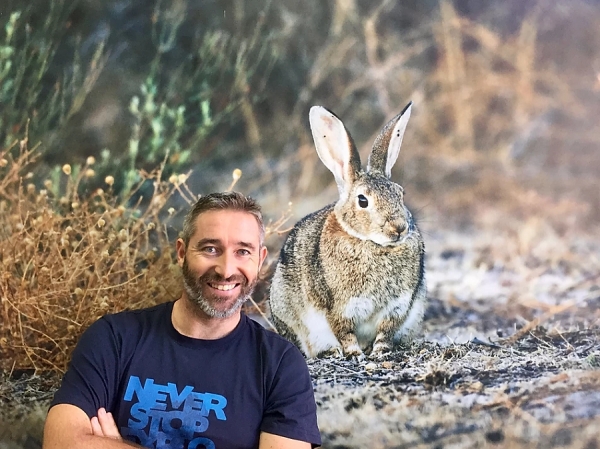Rabbits are in danger. The culprit of them gradually dying off is rabbit haemorrhagic disease, or RDH (abbreviated to EHV in Spanish), a highly contagious viral disease affecting primarily European rabbits (Oryctolagus cuniculus) at the age of four weeks or older. The infectious agent of this disease is a Lagovirus that causes vascular necrosis, especially affecting the liver. This infection causes haemorrhaging that gives the disease its name and has a death rate of between 70% and 90%.
Throughout history, two main variants have been detected: the classic variant, which started in China in the 1980’s and killed 140 million rabbits in China in the year before it spread throughout the rest of Europe, and the new variant, identified in 2010 in France, which no longer only affects adult rabbits but rather can be found in rabbits as young as 11 days old. Besides, this new variant also affects hares and has shown itself to be adept at recombining with other RDH viruses.
The aim of Project LAGMED (Improvement of preventive actions to emerging LAGoviruses in the MEDiterranean basin: development and optimisation of methodologies for pathogen detection and control) funded by the PRIMA Foundation is, therefore, to research this new variant that has completely displaced the classic virus.
In order to fight this new variant that has spread around the planet in less than six years, University of Cordoba Department of Botany, Ecology and Plant Physiology researcher Carlos Rouco is leading the UCO team working on Project LAGMED, along with eight other entities in Portugal, France, Italy, Tunisia and Algeria.
The main objective of the project is to monitor RHD’s epidemiology in the Mediterranean basin and carry out a genomic characterization of circulating strains. The data gathered in this project by means of analyzing wild rabbits and hares found dead in the countryside as well as the analysis of farm animals will be used to advise and enable stakeholders and partners in Africa on diagnosis and prevention of the disease and how to manage it.
This project could be used to decrease both the negative environmental and financial effects. Lower numbers of the European rabbit (categorized as an endangered species by the IUCN since January 2020 in Spain) do not solely affect this species, but also other species in the food chain such as the Iberian lynx and the Spanish Imperial eagle.
From an economic standpoint, the decline of farm rabbits affects regions that base their economies on rabbit farming or on small game hunting. In the United States, for instance, RHD’s impact on the pet industry amounts to 2.3 billion dollars. We hope to contribute to sustainable farming systems, particularly in Africa, developing containment measures against a still-emerging animal disease.
During the three years Project LAGMED will be performed, faster, more precise and sensitive diagnostic tools will be developed, especially relevant to the industry connected to rabbits, and cheaper, more effective vaccines will be created. In this way, “a contribution is made to protect sustainable farming systems, specifically in Africa, by developing containment measures against a still-emerging animal disease” explains Rouco, who leads the University of Cordoba team responsible for compiling samples from all over the peninsula, The Canary Islands, Ceuta, Melilla and Northern Morocco as well as creating a method that effectively determines the serology in all these field samples.
The LAGMED project “Improvement of preventive actions to emerging LAGoviruses in the MEDiterranean basin: development and optimisation of methodologies for pathogen detection and control” (PRIMA-S2-2018-PCI2019-103698) is cofunded by the European Union under the PRIMA programme and by the Ministery of Science, Innovation and Universities through the Spanish National Agency for Research under the PRIMA-S2-2018 and PCI2019 calls, respectively.
This article is part of the communication strategy designed by the International Project Office to divulge the international projects granted to the University of Cordoba.


